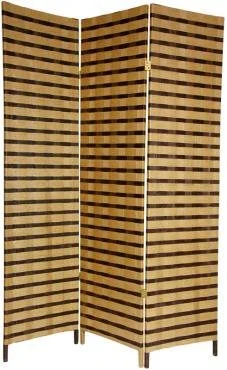Interior Design: What are the Ways to Make a Room Feel Bigger?
Beasley & Henley Interior Design welcomes our guest blogger, Tina Madsen.  Tina Madsen is a design enthusiast who brings her passion for modern décor and writing to her role as the NowModern.com blogger. She also specializes in turning small living areas into spacious social hubs with bar stools and counter stools. Most people want bigger apartments or homes to live in. It’s always easier to adjust to a wider space than to cram yourself and all your belongings in tiny quarters. The obvious solution for small rooms is renovation. However, that’s not always possible. What to do? Decorate your rooms cleverly and try these tricks to make your tiny rooms look and feel large.1. Glass and Mirrors
Tina Madsen is a design enthusiast who brings her passion for modern décor and writing to her role as the NowModern.com blogger. She also specializes in turning small living areas into spacious social hubs with bar stools and counter stools. Most people want bigger apartments or homes to live in. It’s always easier to adjust to a wider space than to cram yourself and all your belongings in tiny quarters. The obvious solution for small rooms is renovation. However, that’s not always possible. What to do? Decorate your rooms cleverly and try these tricks to make your tiny rooms look and feel large.1. Glass and Mirrors
The small square space looks magnified thanks to mirrors.
This is an old school trick for making small rooms appear larger and wider. They give an illusion of depth, which is why placing a panel of mirror along one side of the room can give the impression that it is twice as big as it actually is. Depending on where you position the mirrors, you can create an illusion of the room being wider or longer.Besides the visual illusion of space, mirrors also reflect light and views. A brightly-lit room is less likely to feel stuffy.As for clear glass, it helps make the room look more spacious. For instance, use a glass-topped coffee table instead of solid hardwood.2. Large WindowsLarge, open windows! Floor-to-ceiling glass windows in high-rise apartments always make them look bigger and more open. The same goes for windows opening from a den to the green yard beyond. Glass feels less like a barrier and doesn’t impede line-of-sight, which heightens the perception of space.3. Less Clutter
The clutter on the floor, plus the dark colors of the room, makes the space look even smaller.
If there’s no clutter, your rooms won’t feel so crowded. Even a spacious room will feel stuffy if it is cluttered with large, heavy furniture and various knickknacks strewn across display shelves and floors. Interior designers can also help you organize and design space-efficient closets and compartments (under the stairs, window seats, etc…) where you can stow seasonal items.
4. Scaled-Down FurnitureIf your rooms are small, don’t cram them with large couches, bulky hardwoods and a pool table. Be practical with the space you have. If you want to have a couch and armchairs, purchase those that will fit just right in the room. Otherwise, you’ll just add clutter into the space, and we’ve already established that is a no-no.5. Whites and NeutralsThe white walls, ceiling, and floor make the room look bigger, while the contrast of red makes the space look stylish.
Light colors are the best for small spaces. White, along with proper lighting, doesn’t leave corners in dark shadows. Dark colors on the other hand can make an already tiny space look even smaller and compact. If you don’t like your walls too white, you can opt for a pale neutral.If there is too much white, take advantage of the clean backdrop and get household items and accessories with contrasting colors. If your living room sofa and chairs are white and black, for example, you can place a bright blue vase on a table or a basket of bright flowers on the center table.6. Room Dividers Consider the idea of using room dividers instead of building walls to separate one room from another. The space above the dividers will reinforce the impression of continuity, which once again is helpful in making the impression that a room is bigger than it actually is. Of course, there’s also the added benefit of portability. You can move them to a different part of the room or put it away completely.7. High Ceilings and Vertical IllusionsIf you can’t make extend the space sideways, may be you can do it vertically. High ceilings make small spaces feel less stuffy. Similarly, decorating the room with vertically-oriented accessories will help create an illusion of a vertically-spacious room. You can hang square photo frames in a vertical line, get high-length drapes (the same color as the walls, as much as possible) with vertical pleats, or install floor-to-ceiling bookshelves.
Consider the idea of using room dividers instead of building walls to separate one room from another. The space above the dividers will reinforce the impression of continuity, which once again is helpful in making the impression that a room is bigger than it actually is. Of course, there’s also the added benefit of portability. You can move them to a different part of the room or put it away completely.7. High Ceilings and Vertical IllusionsIf you can’t make extend the space sideways, may be you can do it vertically. High ceilings make small spaces feel less stuffy. Similarly, decorating the room with vertically-oriented accessories will help create an illusion of a vertically-spacious room. You can hang square photo frames in a vertical line, get high-length drapes (the same color as the walls, as much as possible) with vertical pleats, or install floor-to-ceiling bookshelves.




Leave a Reply
You must be logged in to post a comment.